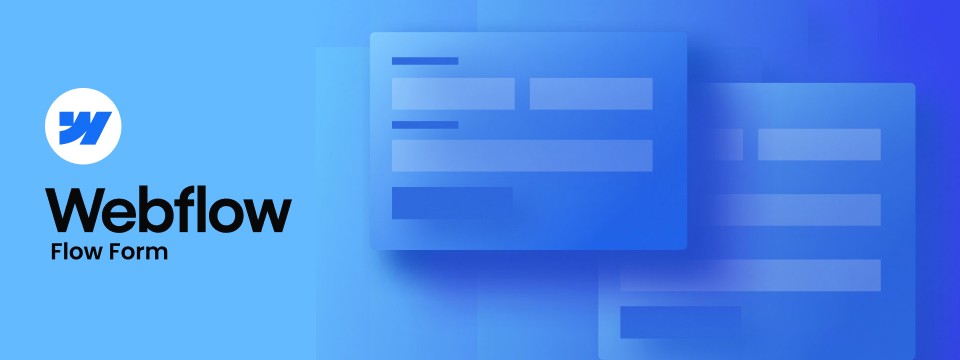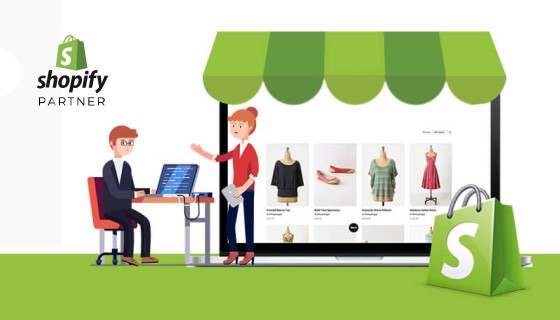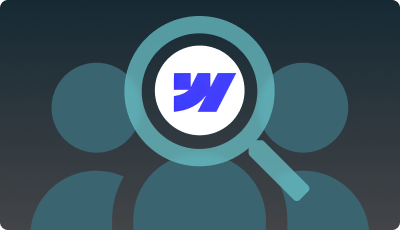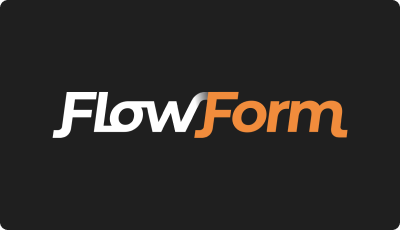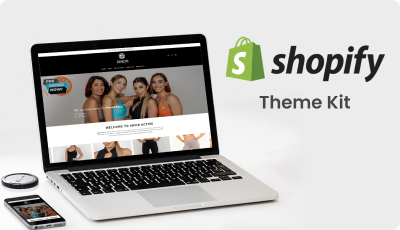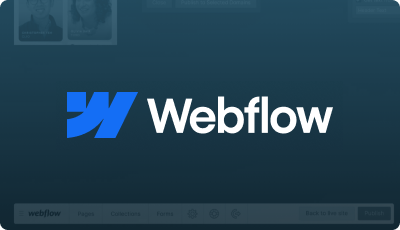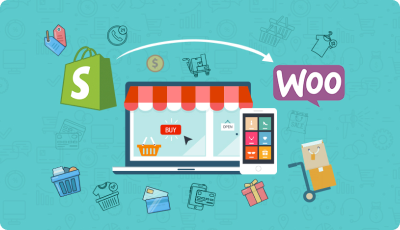Introduction
In the ever-evolving digital landscape, businesses constantly seek ways to enhance their websites to attract more traffic. According to a 2017 HubSpot report, companies receive a significant number of website visitors, leads, and new customers monthly, emphasizing the importance of making websites more engaging.
One powerful method to engage visitors and gather valuable user information is by incorporating Flow Forms into your website. These forms enable users to easily contact your company, sign up for newsletters, shop for products or services, and provide feedback. To achieve this, Webflow, a robust platform for web development, comes into play. With its drag-and-drop interface and components, Webflow facilitates the creation of dynamic Flow Forms.
Unleashing Your Webflow Potential
FlowForm isn’t just a plugin; it’s a paradigm shift for Webflow development. By unlocking the power of custom fields and conditional logic, you can craft forms that are not just functional but truly transformative. Imagine forms that not only collect data but also engage users, personalize their experience, and automate critical tasks. With FlowForm, the future of Webflow development for businesses is all about creating impactful and dynamic user experiences.
Game-Changing Webflow Development
The possibilities with FlowForm are truly limitless. Here are just a few ways it can revolutionize your Webflow development:
Simplified Lead Capture: Create targeted forms for different marketing campaigns, effortlessly capturing the specific data you need from each lead.
Streamlined Onboarding Processes: Based on their selections, guide users through a personalized onboarding journey, ensuring a smooth and efficient start.
Dynamic Content Delivery: Use conditional logic to display personalized content based on form input, creating a unique experience for each user.
Advanced Automation: Integrate FlowForm with other Webflow plugins and Zapier to automate tasks and workflows triggered by form submissions.
Flow Forms: Powerful Lead Generation Tools For Your Website
A Flow Form is a dedicated section on a website designed to collect prospect data. Utilizing various elements like text boxes, upload file buttons, checkboxes, and more, Flow Form integration enables users to interact with website owners, register for events, or subscribe to newsletters. Businesses often use these forms to gather customer details for marketing purposes, offering incentives like free ebooks, discount codes, webinars, or event passes.
Getting Started With Flow Forms
Creating effective Flow Forms in Webflow is surprisingly simple, even for beginners. Here’s a breakdown of the process:
- Account Setup: Sign up for a Webflow account and create a new project to get started.
- Flow Form Installation: Install and activate the Flow Form plugin within your Webflow project.
- Intuitive Drag-and-Drop Interface: Use the user-friendly interface to drag and drop various form elements onto your design canvas.
- Database Connection: Connect Flow Form to a designated database to store and manage all form submissions effectively.
- Customization Options: Create custom fields within your forms to tailor them to your website’s specific data collection needs.
Customization And Design For Engaging Forms
With FlowForm, you can create custom fields that go beyond ordinary text and email inputs. Imagine capturing phone numbers, selecting from product dropdowns, or even uploading files—all within the intuitive Webflow interface. This empowers you to design forms that perfectly match your data collection requirements, adhering to best Webflow form practices.
- Tailored Fields: Customize form elements like text boxes, checkboxes, and dropdown menus to collect the exact information you require.
- Seamless Layouts: Design user-friendly layouts with options for stacked fields, multi-column formats, and inline layouts.
- Data Accuracy: Set clear field properties and validation rules to ensure users submit accurate data.
- Conditional Logic: Enhance user experience by dynamically adjusting the form based on user input using conditional logic features.
- Cohesive Design: Style and design your form elements using the built-in editor or leverage CSS for advanced styling to match your website’s aesthetic.
Form Submission And Notification Management
Once you’ve crafted your Flow Form, user submissions are seamlessly sent to:
- Flow Form Dashboard: Access a dedicated dashboard to view all form submissions conveniently.
- User Backend: Submissions are also sent to your designated user backend for further processing.
- Email Notifications: Set up notification alerts to receive immediate emails for each form submission.
Advanced Features And Integrations For Enhanced Functionality
Webflow integrates with various marketing platforms like Mailchimp, ActiveCampaign, and Constant Contact, among others. These integrations unlock advanced features beyond basic form functionality, allowing you to:
- Streamline Marketing Efforts: Automatically add leads captured through Flow Forms to your marketing automation platform for targeted campaigns.
- Gain Marketing Insights: Utilize marketing platform integrations to gain valuable insights into user behavior and optimize your forms for better lead generation.
Best Webflow Form Practices For Lead Generation Forms
A Webflow Form is a dedicated section on a website designed to collect prospect data. Utilizing various elements like text boxes, upload file buttons, checkboxes, and more, Flow Forms enables users to interact with website owners, register for events, or subscribe to newsletters. Businesses often use these forms to gather customer details for marketing purposes, offering incentives like free ebooks, discount codes, webinars, or event passes.
Here are some best practices to follow when creating Webflow lead generation forms:
- Keep It Simple And Easy To Fill Out: The fewer fields you have, the more likely people are to complete your form. Only ask for information that is absolutely necessary.
- Match Form Fields To Your Marketing Automation Platform: When designing your form, consider the fields you’ll use in your marketing automation platform (MAP). This ensures a smooth transition of captured lead data into your nurturing campaigns.
- Create Dynamic And Personalized Forms: Webflow allows you to create conditional logic within forms. This lets you personalize the form experience based on user input, offering a more relevant interaction and increasing completion rates.
- Optimize For Higher Conversion Rates: A/B tests different form elements like layout, button color, and field order to see what resonates best with your audience. This data-driven approach helps you continuously optimize your forms for maximum conversions.
By following these best practices, you can create Webflow lead generation forms that are effective at capturing valuable prospect data and growing your business.
Conclusion
Webflow Flow Forms are valuable tools for websites of all sizes, helping attract users, collect data, and build relationships. Whether you’re a small business owner or part of a larger enterprise, incorporating dynamic Flow Forms into your website can significantly improve user engagement and enhance overall website performance. If you need assistance in creating powerful Flow Forms, consider reaching out to ZealousWeb, a professional web development agency with expertise in Webflow techniques. Their team of skilled developers can help you leverage the full potential of Webflow for your web development endeavors.


